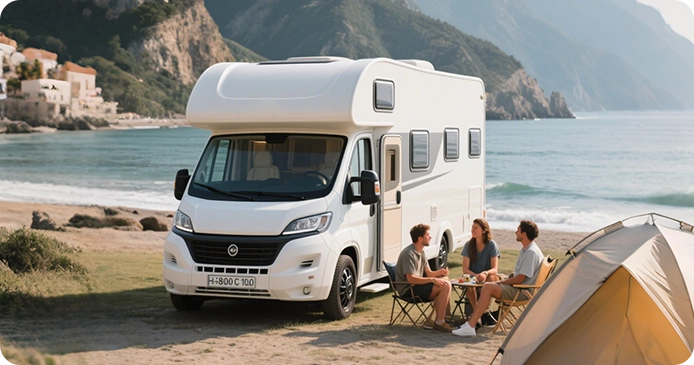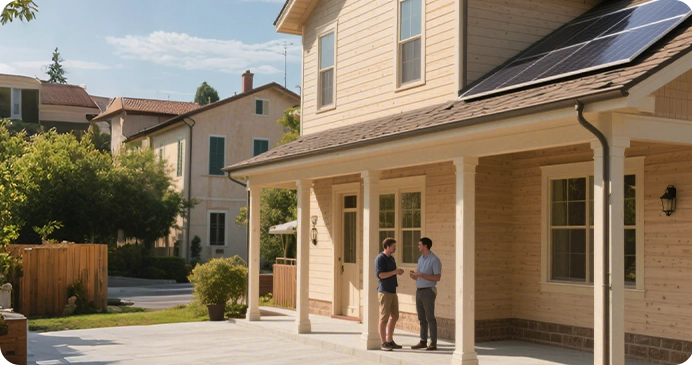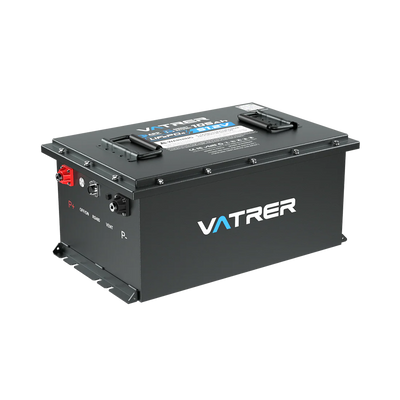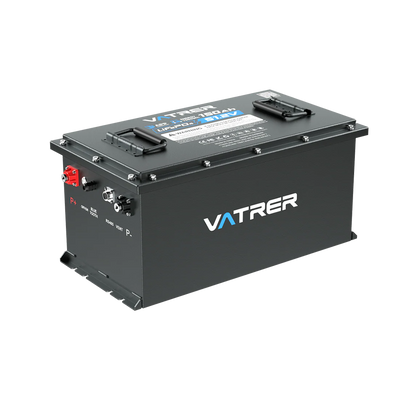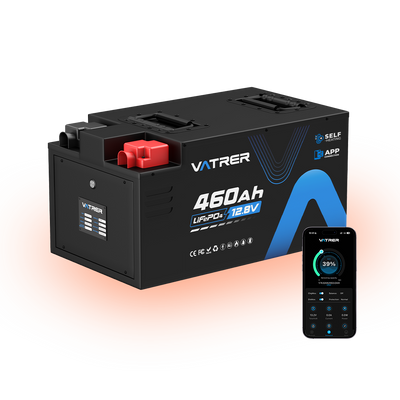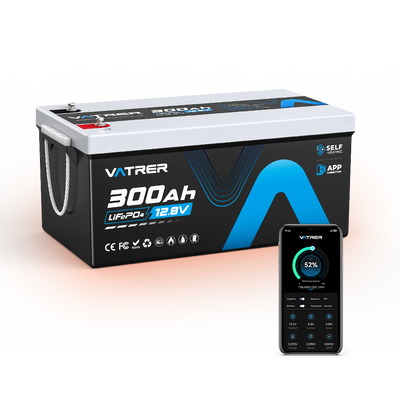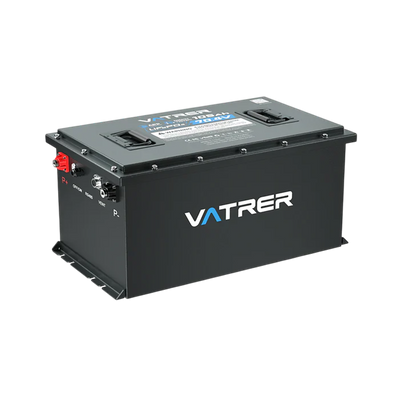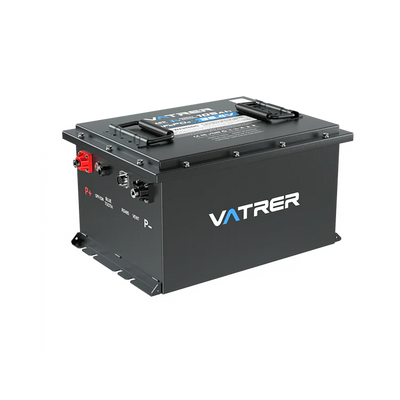
How Much Is a Solar System For a 2000 Sq Ft House?
Pairing solar systems with home solar battery storage, such as lithium solar batteries, enhances off-grid efficiency and energy independence, making solar energy a smart investment. Let's dive into the details to help you plan a cost-effective home solar solution.
This guide breaks down 2025 costs, panel requirements, and the role of lithium batteries, offering clear guidance on whether you should install solar panels on your home.

What Are The Costs Involved In Installing a Home Solar System?
The total cost of installing a solar system consists of three main components: equipment, labor, and additional support fees. Understanding these components is the first step in developing an accurate budget.
For a 2,000-square-foot home, the price of a solar system can range from $20,000 to $40,000, depending on the type, brand, and quality level of the system you choose.
- Equipment costs: usually account for 60-70% of the total expenditure, mainly including components such as solar panels, inverters, mounting systems and cables.
- Labor installation costs: generally account for 15-25% of the total cost. Labor costs typically range from $0.03 to $0.035 per watt. Based on this calculation, a 10-kilowatt system would cost approximately $280-350 to install.
- Additional supporting costs: including approval and permitting, grid connection, roof reinforcement, and maintenance of the system. These expenses are easily underestimated but can add 15-20% to the total cost. For example, in some US cities, building permit and grid connection fees can cost as much as $1,000-2,000. Additionally, if you consider adding battery storage, that will add an additional $10,000 to $15,000 in costs.
The following table summarizes the cost breakdown of a 2,000 square foot residential solar system for your reference:
| Cost Items | Price Range | Things to Consider |
|---|---|---|
| Solar Panels | $1,400-2,800 | Depends on efficiency (Monocrystalline silicon is generally more expensive but more efficient). |
| Inverter | $200-400 | Microinverters are more expensive than centralized inverters but offer better efficiency. |
| Mounting System | $1,000-2,500 | Prices vary depending on roof type (flat or pitched). |
| Installation Labor | $150-1,000 | Regional variations are significant. |
| Approval and Grid Connection | $70-300 | Depends on local regulations. |
| Maintenance and Monitoring System | $70-200 | Recommended equipment |
How Much Does a Home Solar System Cost for 2000 Sq Ft?
The average cost of a home solar panel system for a 2000 sq ft house in 2025 ranges from $18,000 to $30,000 before incentives, dropping to $12,600-$21,000 after the federal solar tax credit (30%).
These system costs exclude battery storage and installation, which can add $5,000-$15,000 and depend on energy usage rather than square footage.
A 2000 sq ft home consumes 900-1200 kWh per month (~10,800 kWh/year), requiring a 6-8 kW system.
Notably, larger systems often have a lower cost per square foot due to economies of scale. The table below outlines regional cost variations:
| Region | Cost per Watt | Gross Cost (6-8 kW) | Net Cost (After 30% Tax Credit) |
|---|---|---|---|
| National (Non-CA) | $3.03 | $18,180-$24,240 | $12,726-$16,968 |
| California | $2.68 | $16,080-$21,440 | $11,256-$15,008 |
To get precise quotes, consult solar installers, as your utility bill and specific energy needs drive the home solar panel system cost. Energy-efficient appliances or insulation upgrades can further reduce system size and costs.
Looking for a solar lithium battery? Discover the Vatrer 51.2V 100Ah self-heating rack-mount lithium battery. One battery can store 5,120Wh of energy, and it can be expanded to include up to 10 batteries, storing up to 51,2KWh of energy. Its self-heating function is perfect for cold climates.
How Many Solar Panels Are Needed for a 2000 Sq Ft Home?
Determining how many solar panels are needed for a 2000 sq ft house hinges on annual energy usage and geographic factors, not just square footage.
A 6-8 kW system typically requires 16-24 panels (400W each) or 12-19 panels (500W each).
The table below shows regional differences based on sunlight availability:
| Region | Annual Energy per kW | System Size Needed | Panels (400W) | Panels (500W) |
|---|---|---|---|---|
| Arizona (Sunny) | 1,900 kWh | 5.7 kW | 14-16 | 12-14 |
| Michigan (Less Sunny) | 1,400 kWh | 7.7 kW | 19-21 | 16-19 |
Factors like roof orientation (south-facing is optimal), minimal shading, and type of panel, such as monocrystalline 18-23% efficiency, polycrystalline 15-17% impact panel count. For accurate planning on how to install solar panels for homes, consult solar installers or use a solar calculator tailored to your energy consumption.
Vatrer has launched a wall-mounted solar energy storage battery designed specifically for home solar energy storage systems. Our battery weighs only 200 lbs and supports Bluetooth connection for real-time monitoring of battery power. One battery pack can provide 10,240Wh of energy storage. You can also expand the design based on the solar energy system to ensure a stable and reliable power supply for long-term off-grid life.
How to Calculate the Size of a Solar System for a 2,000-Sq-Ft Home
Determining the appropriate size for a home solar system is an important step in estimating total costs. A system that's too large or too small will impact your return on investment.
A 2,000-square-foot home typically requires an 8-12 kW solar system, depending on the following estimated factors:
- Available Roof Area: This is the primary factor in determining solar system size. Even if your home has a total area of 2,000 square feet, the actual roof area available for solar panels may be only 30-50%. Chimneys, skylights, ventilation ducts, and the roof shape all reduce the available space. Generally speaking, a solar system requires about 100 square feet of installation space per kilowatt. This means a 10 kW system would require approximately 1,000 square feet of suitable roof area.
- Power Demand Analysis: This should be aligned with the size of the energy storage system. In the United States, the average household uses about 10,80KWh of electricity per year, which equates to 900Wh per month. A 10kW solar system in most areas can generate 12,000-16,000 Wh of electricity annually, depending on your location. This is enough to cover the electricity needs of a 2,000-square-foot home.
- Regional sunlight conditions: Sunlight significantly affects the energy conversion of a solar system. For example, a system in Arizona can generate 30-50% more electricity than one in Michigan. San Francisco has an average annual standard sunlight of approximately 1,657 hours. You can use an online solar calculator to estimate the annual energy production for a specific system size by entering your address, rooftop orientation, and local electricity rates.
How to estimate the size of a solar energy storage system:
- Analyze your electricity bills for the past 12 months to determine annual electricity consumption (kWh).
- Consider future changes in electricity demand (such as purchasing an electric car or adding air conditioning).
- Evaluate the available roof area and orientation.
- Check the average hours of sunlight in your area.
- Consult a professional installer for shadow analysis and system design.
Why Choose Solar Power with Lithium Battery Storage?
For example, in high-cost areas like California, peak-hour electricity costs can reach as high as $0.30 to $0.50 per kilowatt-hour. For example, a 2,000-square-foot home using 900 to 1,200 kilowatt-hours of electricity per month could save $300 to $600 annually by offsetting its reliance on the grid with solar power.
However, solar panels alone can only generate electricity during bright daylight hours, leaving homeowners reliant on the grid at night or on cloudy days. Combining a home battery with a solar energy storage system can address this limitation.
Importance of Pairing Lithium Batteries with Solar Panels
Solar panels typically deliver their highest power at midday, but household energy demand often peaks in the evening, when electricity prices are highest. Without storage, excess daytime electricity is either wasted or sold back to the grid at a lower price.
Using solar lithium batteries can help you store this excess electricity for later use, allowing homeowners to power their homes during peak electricity prices or power outages. For example, a 10 KWh battery can store enough energy to meet the evening electricity needs of a 2,000-square-foot home, saving $100 to $200 per month in areas with high electricity prices.
Beyond cost savings, lithium-ion batteries also enable energy independence. Grid-connected systems rely on utility companies, which can be problematic in areas with frequent power outages or unstable grids. Batteries provide backup power, ensuring the operation of critical appliances like refrigerators and medical equipment. Therefore, lithium-ion batteries are crucial for off-grid home energy storage systems.
Advantages Of Using Lithium Batteries In Solar Systems
- Grid Independence and Peak-Rate Savings: By storing solar power, lithium batteries allow homeowners to avoid peak electricity rates, which can be 2-3 times higher than off-peak rates. For example, in California, using stored energy during evening peak hours (4-9 PM) can save $500-$1,000 annually for a 6-8 kW system, shortening payback periods by 1-2 years.
- Backup Power Reliability: During outages, lithium batteries provide seamless power for essential loads. A 10 kWh battery can run a refrigerator, lights, and Wi-Fi for 8-12 hours, critical in regions prone to blackouts.
- Compact and Low Maintenance: Lithium batteries are compact, requiring less space than alternatives, making them ideal for residential installations. Their home battery storage without solar maintenance cost is low, typically $100-$300/year for inspections, checking voltage, cooling systems, and connections.
- Environmental Synergy: Pairing solar energy with lithium batteries maximizes environmental benefits. A 6-8 kW system with a 10 kWh battery reduces 8-10 tons of CO2 annually, equivalent to planting 150-200 trees. By minimizing grid reliance, batteries further reduce fossil fuel-based energy consumption.
- Support for Off-Grid Living: It can store 2-3 times the daily power required to meet the power demand during cloudy days or winter. For a 2,000 square foot home using 30 kWh of electricity per day, a 20-30 kWh battery can ensure reliable power supply year-round, allowing the solar system to be used normally in remote areas.
How To Use Incentives To Reduce Solar System Installation Costs
Learn about local incentives to ensure you maximize your savings on a home solar panel system.
- Federal Solar Tax Credit: Covers 30% of system costs. $5,400-$9,000 for an $18,000-$30,000 system (excluding batteries).
- State and Local Incentives: California's net metering (NEM 3.0) credits excess solar power at $0.08-$0.30/kWh, saving $200-$600/year for a 6 kW system. Property and sales tax exemptions save thousands. States like New York offer rebates up to $5,000, while Texas provides property tax exemptions.
- Battery Incentives: California's SGIP offers up to $1,000/kWh for home battery storage; other states like Massachusetts provide similar grants.
- Financing: Solar loans (3-7% interest), leases, or power purchase agreements (PPAs) spread costs over 10-20 years, often with $0 down.
Since incentive policies vary across regions, if you need to learn more about relevant policies, you can consult your solar installer or check local policies through DSIRE.
What Other Factors Influence The Cost Of a Solar System For a 2,000-Square-Foot Home?
Due to regional differences, prices can fluctuate by at least 20%-30%. Understanding the following factors that may influence the final estimated installation cost can help you better plan your budget:
- Regional labor costs and market competition: These are the main factors that contribute to cost differences. Areas with a high concentration of solar installers typically experience more intense price competition and may offer discounts of 5-15%. For example, California, due to its large number of installers and high market demand, may offer lower prices than some areas in the Midwest where installers are sparse.
- Local policies and permitting fees: Some cities or states may have specific regulations for solar installation, requiring additional safety inspections or grid connection approvals, which can increase costs. For example, Florida requires that solar system installations be reviewed by a professional engineer, a process that can add hundreds of dollars to the bill. In contrast, Arizona's solar permitting process is more streamlined, reducing associated costs.
- Roof condition and installation complexity: These factors determine the difficulty of solar system installation and directly impact labor time. The following conditions can increase installation costs by 20-30%:
- Steep roof slopes increase the difficulty and risk of the work
- Needing to repair or reinforce an older roof first
- Complex roof shapes (multiple corners, skylights, etc.)
- Requirement to remove the existing roof structure for installation
How to address regional price differences:
- Get detailed quotes from at least 3-5 local installers
- Investigate state and city solar incentives (which may offset some of the regional price premium)
- Consider potential discounts for installing during off-season periods (such as winter)
- Evaluate whether it's worthwhile to seek out a lower-priced but comparable installer in a neighboring area
- Check for local solar group purchasing programs
It's important to note that Tesla Solar Roof pricing is relatively uniform, with minimal regional variation, due to standardized pricing and installation processes. For a 2,000-square-foot roof, Tesla quotes approximately $33,950 (including tax deductions), providing a baseline price that helps you assess the reasonableness of other quotes.
Conclusion
The average cost of a home solar panel system for a 2000 sq ft house is $12,600-$21,000 after the federal solar tax credit, requiring 12-24 panels (400-500W) and enhanced by lithium batteries costing $5,000-$15,000. With solar incentives, financing, and savings of $50,000-$70,000 over 20 years, home solar reduces electricity bills, boosts property value, and cuts emissions.
For reliable home battery storage, Vatrer offers high-efficiency lithium solar batteries, delivering 90-95% efficiency, 3,000-5,000 cycles, and a 8-10 year lifespan.
These batteries ensure seamless integration with solar systems, providing robust backup power and grid independence. Visit the Vatrer website to explore the best home solar battery backup system cost options and get a personalised quote to power your home with solar power.
Share







































































